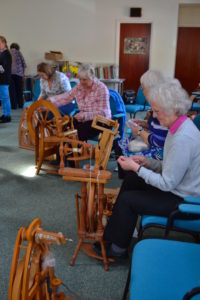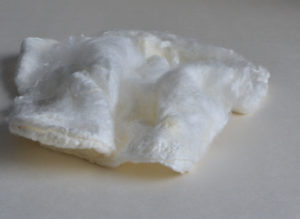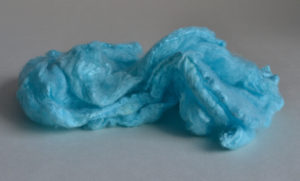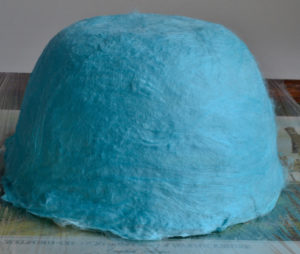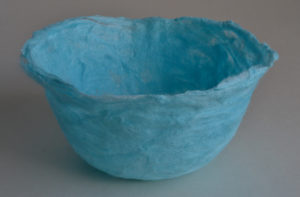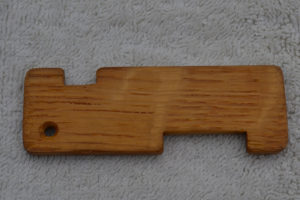Anne Dixon led the meeting on the topic of Weaving Tools and Tips. Anne gave us a whistle-stop tour of the weaving process from warping (demonstrated on her warping mill) to fulling the web into cloth, and there was a selection of weaving equipment on display. Sue Brooks brought along her Saori Piccolo loom, upon which it was possible to illustrate both technical terms and techniques, making the whole topic interesting and informative to both weavers and non-weavers alike. Even experienced weavers learnt a thing or two, whether it was the use of hairspray and/or combs to deal with those sticky warp threads, or filling a 35mm film canister with baking beans to act as a weight for loose warp threads.
This proved to be a most useful forum where members were able to exchange tips and ideas, comparing techniques and asking questions.

